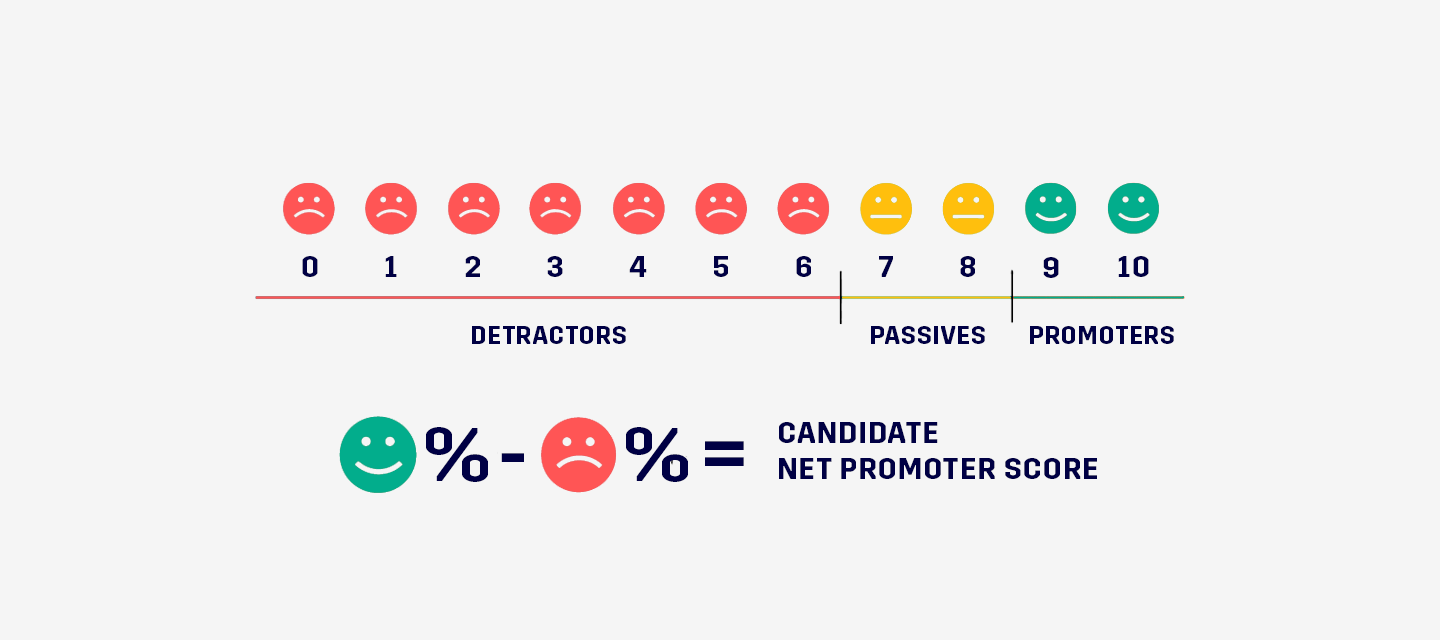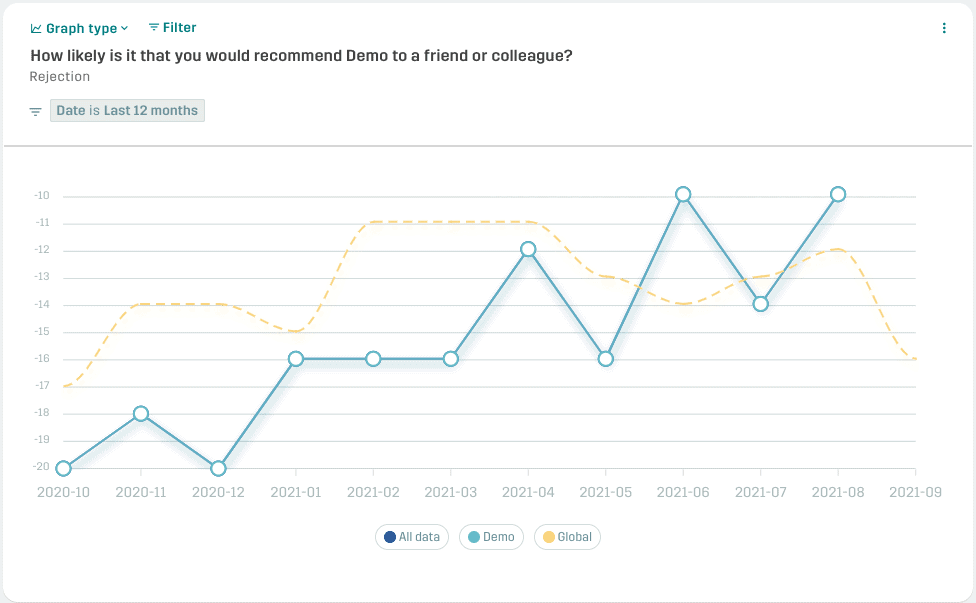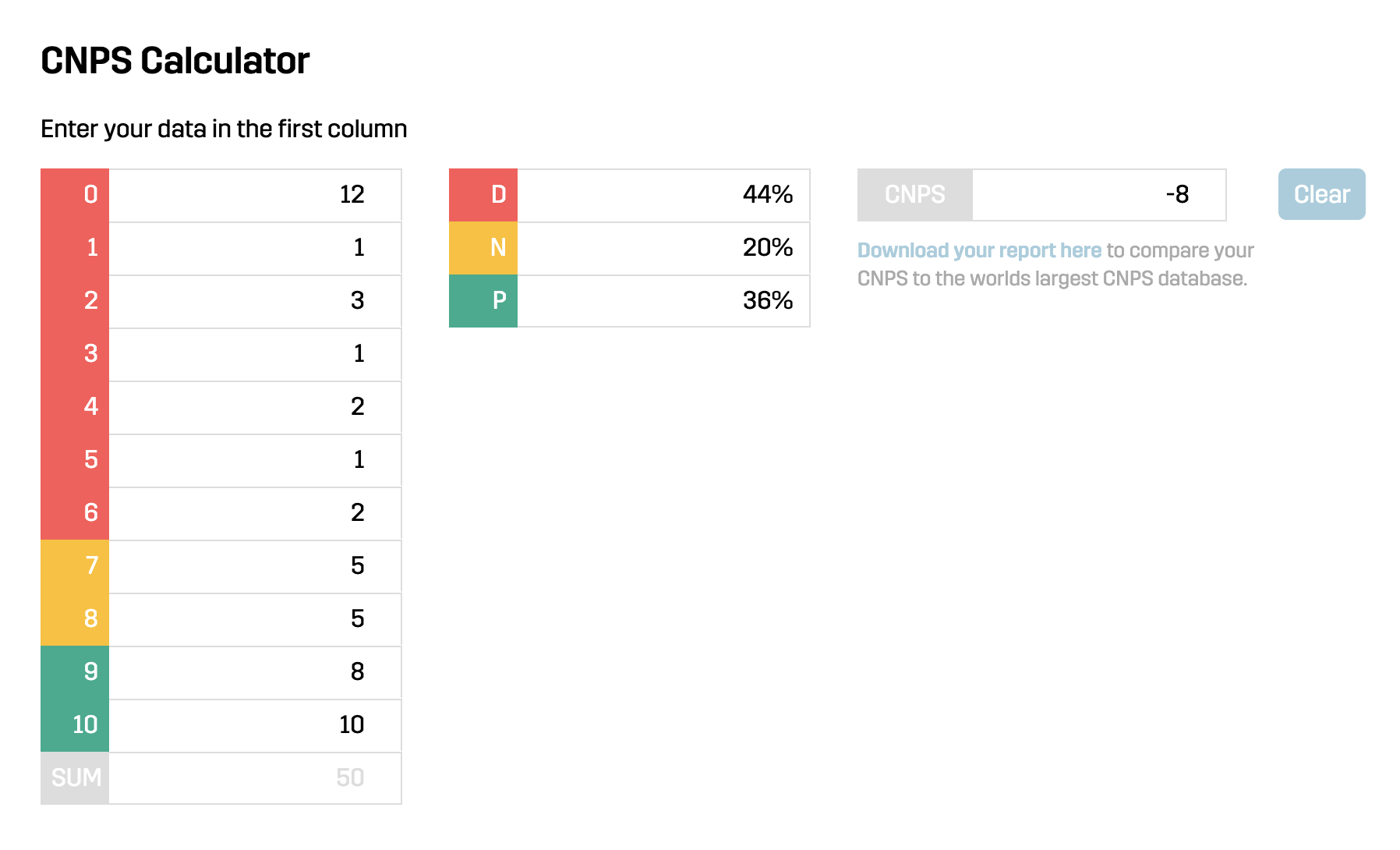
Tilda Lindén
How to Calculate Your Candidate Net Promoter Score
All you need to calculate your organization's CNPS
— Denna sida är också tillgänglig på Svenska 
When you measure the candidate experience of the candidates in your recruitment process, the Candidate Net Promoter Score (CNPS) is the metric you are looking for and want to calculate!
If you are not familiar with CNPS you might know what Net Promoter Score (NPS) is. The NPS is used to measure the loyalty and promoter score of a company’s customers while the CNPS measures the loyalty and promoter score of the candidates in the recruitment process.
To read more about the concept of Candidate Net Promoter Score and CNPS, Read our Ultimate Guide to CNPS
How Does the Metric Candidate Net Promoter Score Work?
Asking your candidates the question “How likely is it that you would recommend X to a friend or colleague?” is what lays the foundation to the CNPS.
The question can be answered on a scale of 0-10, where 0 represents the value of not being likely to recommend your company to a friend or colleague and 10 indicates that the candidate is very likely to promote your company.
The CNPS scale ranges from -100 to +100 which means that the numbers scores collected from your candidates can give you a CNPS between -100 to 100 which indicates how likely your candidates are to promote your company. The higher the CNPS, the more loyal candidates and promoters.
If we say that your company wants to measure the candidate experience of 50 candidates with the CNPS and you get the following results:
| 0: 12 |
|---|
| 1: 1 |
| 2: 3 |
| 4: 2 |
| 5: 1 |
| 6: 2 |
| 7: 5 |
| 8: 5 |
| 9: 8 |
| 10: 10 |
The candidates who answered between 0 and 6 are called the Detractors. These candidates are not likely to recommend your company to a friend or colleague. Then we have the candidates that have been answering 9 or 10. They are very likely to recommend your company to a friend or colleague and are therefore called the Promoters. In the middle, between 7-8 we have the Passives, which refers to the candidates that neither resists to promote your brand nor promoters of your brand.
Summing up the scores into the 3 categories of candidates: Detractors, Passives and Promoters and calculating them into a percentage of the total number of candidates (in this case 50) makes it possible to calculate the Candidate Net Promoter Score.
If we continue with the earlier example we will get the following percentages: Detractors: 44% Passives: 20% Promoters: 36%
If you then continue with subtracting the percentage of Detractors from the percentage of Promoters (Promoters 36 – Detractors 44) it will give you a CNPS of -8.

How to Interpret the Result of Candidate Net Promoter Score
When you have calculated the Candidate Net Promoter Score of -8, is this good or bad? How should we interpret this? CNPS is a research-based metric from a Harvard Professor called Frederick Reichheld and that research explains how the metric should be interpreted using benchmarking (Reichheld, 2003).
That means that -8 can be both good or bad, depends on what your competitor’s scores are. If your competitors on average have -20, then -8 is good and the research states that you will have a higher growth and better results than your competitors.
A Simple Tool to Calculate the Candidate Net Promoter Score

By using the CNPS calculator, the measurement becomes even easier to manage. The calculator is a simple tool that only requires you to put in the number of candidates that chose the different numbers on the scale of 0 to 10, which in turn gives you your candidate net promoter score
So, if we once again look at the earlier example with the measurement of 50 candidates. The following information would be put into the calculator:
| 0: 12 |
| 1: 1 |
| 2: 3 |
| 4: 2 |
| 5: 1 |
| 6: 2 |
| 7: 5 |
| 8: 5 |
| 9: 8 |
| 10: 10 |
The calculator will then sum up the answers in these categories and create a percentage rate of the 3 categories: Detractors, Passives and Promoters which will be translated into the CNPS. Using this tool the measurement of the CNPS becomes as easy as it possibly can be.
Now you know how to calculate your Candidate Net Promoter Score. So, what are you waiting for? It is time to start measure!
Psst… Keen to know even more about CNPS. Read our ebook about CNPS to learn about its business impact and origin.
Reference
Reichheld, F.F. (2003). The One Number You Need to Grow. Retrieved October 31, 2019, from https://hbr.org/2003/12/the-one-number-you-need-to-grow#
Get notified on new blog updates
+ get our popular candidate experience ebook for free
[activecampaign form=15 css=0]